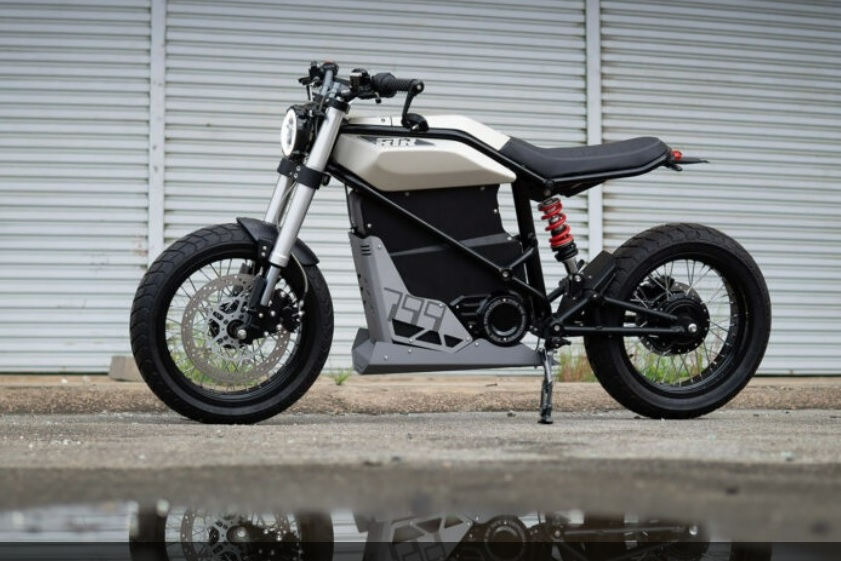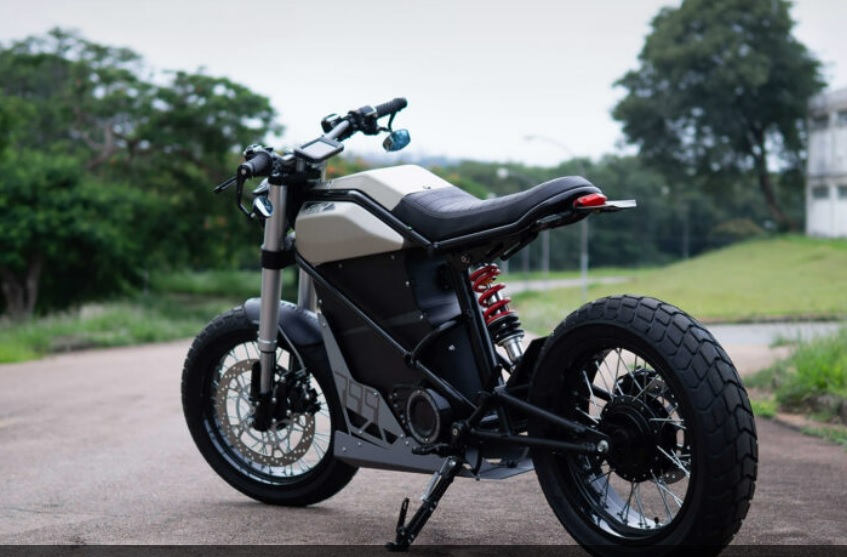RETRORIDES BY LOURENÇO has earned a solid reputation within the custom BMW K-series community for their exceptional builds, including some of the most impressive K-series café racers to date. In fact, they’ve even authored a book on the subject. Now, after three decades of customizing traditional gasoline-powered motorcycles, the Brazilian workshop is branching out into a new market.

They’re introducing their own line of small-scale electric motorcycles, marking a significant shift for Retrorides By Lourenço. The debut model is an impressive first offering, reflecting the team’s dedication to quality and style.
Retrorides, a motorcycle brand, is operated by Gustavo, Rodrigo Lourenço, and their father José from a town situated a few hours away from São Paulo. According to Gustavo, the trio always harbored the aspiration of owning their own motorcycle brand. However, given the intricate nature of the components and the exorbitant cost associated with building a combustion engine, this remained an unattainable dream for a small enterprise like theirs. With the advent of electric motors and technological progress, this dream is now within reach.
Our goal was to address a void in the electric motorcycle industry. We were weary of observing electric bikes that either resembled the bike of MegaBeast Investigator Juspion or lacked any distinctiveness. Our conviction is that electric motorcycles can embody the essence of bespoke motorcycles, merged with performance and innovative technology, while still retaining their individuality and elegance.
RetroRides has launched a new venture, RTR Electric Motorcycles, and they have introduced their inaugural product, the RTR 799e. This motorcycle sits at the intersection of a neo-retro scrambler and a contemporary supermoto, and it will be meticulously crafted to order in Brazil, with a diverse range of customization options offered to purchasers.
According to Gustavo, the Retrorides DNA (custom motorcycle style) was the initial inspiration for the bike, which led to the decision to make it a scrambler. The scrambler style is versatile for urban use and provides a comfortable riding position. Gustavo also stated that with the option for customization, they can maintain the essence of handcrafted bikes while implementing modern safety technologies. Additionally, they prioritize the use of environmentally friendly materials in their motorcycles, ensuring durability and upgradability.
Retrorides chose not to modify an existing internal combustion motorcycle platform to accommodate an electric drivetrain. Instead, they opted to create the 799e from the ground up. This approach necessitated a significant amount of 3D design, including digital simulations to ensure that the bike would function correctly in real-world conditions.
Gustavo explains that the engineering of electric motorcycles is fundamentally distinct, with no vibration and numerous different concepts, such as the ability to alter the center of gravity.
One of the primary considerations the team faced was whether to incorporate a ‘fuel tank’ in the bike design. The debate was centered on whether a tank was necessary for anything beyond visual appeal, given that the bike didn’t require fuel. Ultimately, the team concluded that a tank would only be included if it contributed to the bike’s usefulness. Consequently, they constructed a seven-liter glove compartment that could accommodate some necessities or fit a raincoat in a tight spot. Like nearly everything else on the 799e, the compartment was made of aluminum.
Retrorides has constructed both the tubular steel frame and swingarm for the 799e, resulting in a sleek and sophisticated design. The frame’s upper rails embrace the “fuel tank,” while the lower portions encircle the battery box. Furthermore, the battery is safeguarded by two bespoke protectors, which are coated in a military-grade anti-scratch substance and integrated with the bike’s sump guard.
The 799e is outfitted with Showa forks affixed to the frame, as well as 17-inch wheels outfitted with Pirelli MT60RS tires. Retrorides has furnished the bike with disc brakes and incorporated a regenerative braking mechanism.
The bicycle is equipped with an 8 kW hub motor that is fueled by a 72 volt / 60 Ah battery. Preliminary estimates suggest that it can reach a maximum speed of 127 km/h [79 mph], cover a distance of 120 km [75 miles], and take five hours to recharge. The motor can be activated to 12 kW using a boost button, which Retrorides has dubbed “Road Runner Mode.”
In addition, all of the intermediate components, such as the motor mounts, yokes, levers, mirrors, and foot pegs, were created using CNC-machined aluminum. The bicycle has all of the necessary LED lighting and a seat that is protected by weather-resistant synthetic leather.
RTR Motorcycles, formerly known as Retrorides, is actively seeking investors as they work towards commencing production in December. The company is currently focused on obtaining homologation in Brazil, the USA and Europe while also carrying out tests and modifications on their 799e model, experimenting with various motors and configurations.
Upon completion, RTR Motorcycles plans to offer a bike configurator on their website that will enable customers to personalize their bike with options such as colors, seat materials, tires, headlights, and side covers.
Gustavo appreciates the bike’s powerful torque and the enjoyable experience of quietly riding through the countryside. However, what has truly impressed him is the response from others.
According to him, “We have managed to challenge a lot of preconceptions with this bike. I have to admit that numerous burly, bearded riders in leather vests have hopped on this bike and come back grinning, asking about its price!”
